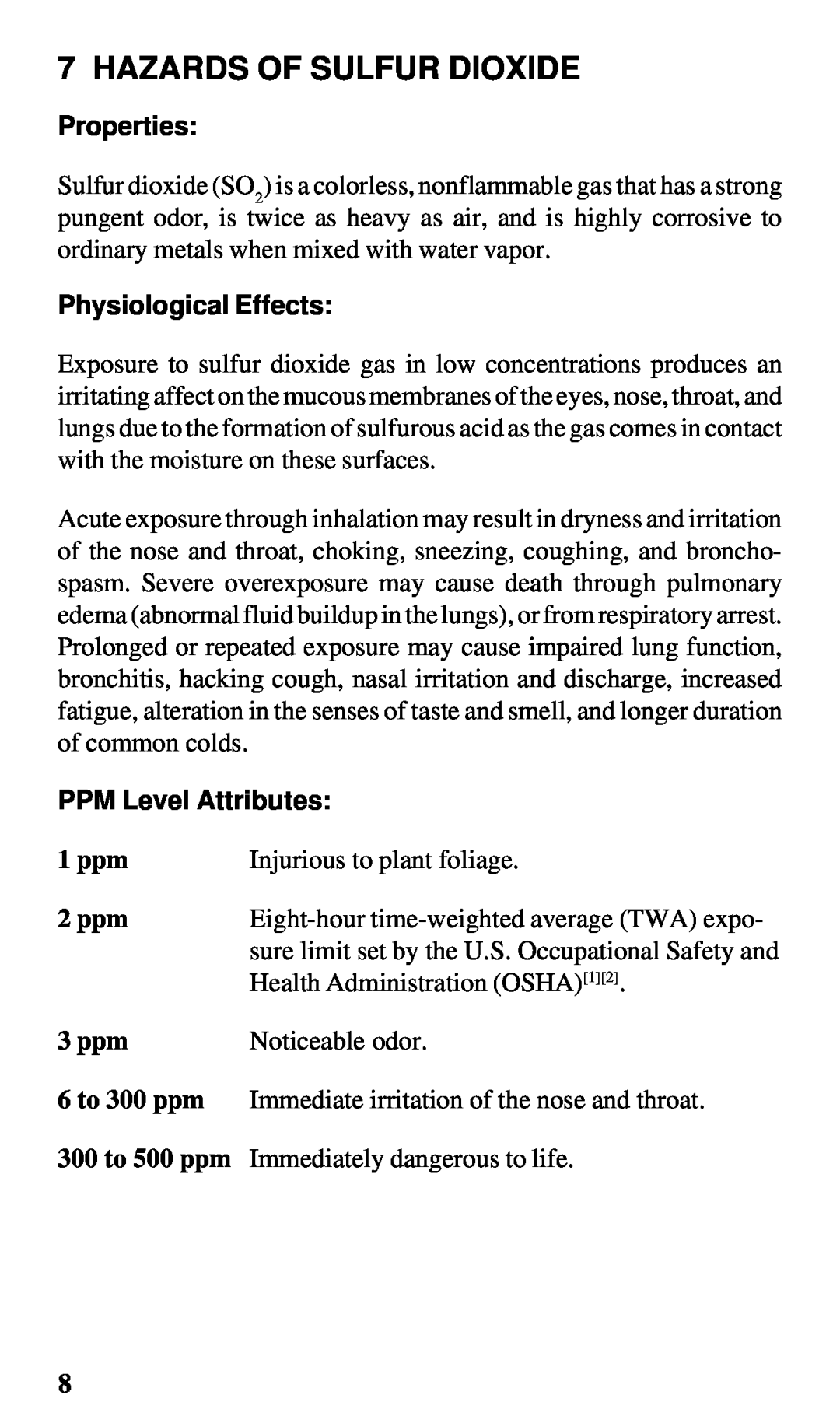7 HAZARDS OF SULFUR DIOXIDE
Properties:
Sulfur dioxide (SO2) is a colorless, nonflammable gas that has a strong pungent odor, is twice as heavy as air, and is highly corrosive to ordinary metals when mixed with water vapor.
Physiological Effects:
Exposure to sulfur dioxide gas in low concentrations produces an irritating affect on the mucous membranes of the eyes, nose, throat, and lungs due to the formation of sulfurous acid as the gas comes in contact with the moisture on these surfaces.
Acute exposure through inhalation may result in dryness and irritation of the nose and throat, choking, sneezing, coughing, and broncho- spasm. Severe overexposure may cause death through pulmonary edema (abnormal fluid buildup in the lungs), or from respiratory arrest. Prolonged or repeated exposure may cause impaired lung function, bronchitis, hacking cough, nasal irritation and discharge, increased fatigue, alteration in the senses of taste and smell, and longer duration of common colds.
PPM Level Attributes:
1 ppm | Injurious to plant foliage. |
2 ppm | |
| sure limit set by the U.S. Occupational Safety and |
| Health Administration (OSHA)[1][2]. |
3 ppm | Noticeable odor. |
6 to 300 ppm | Immediate irritation of the nose and throat. |
300 to 500 ppm | Immediately dangerous to life. |
8
